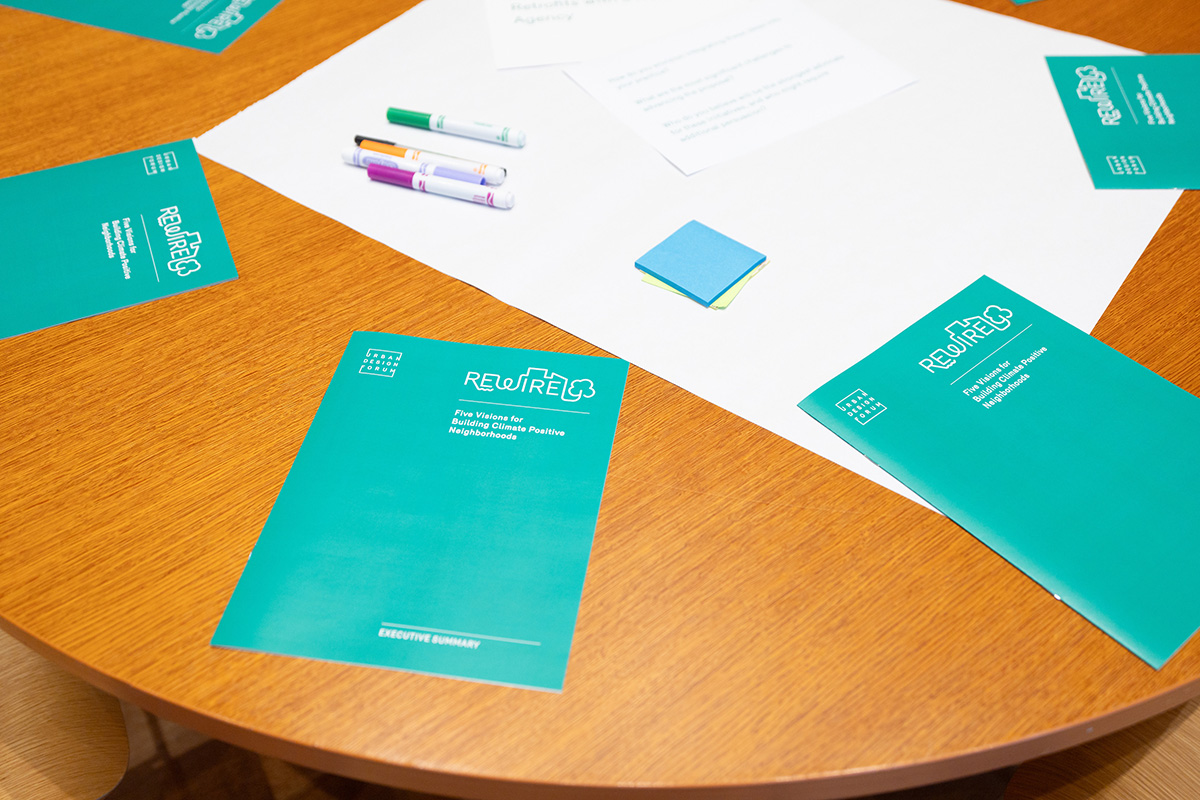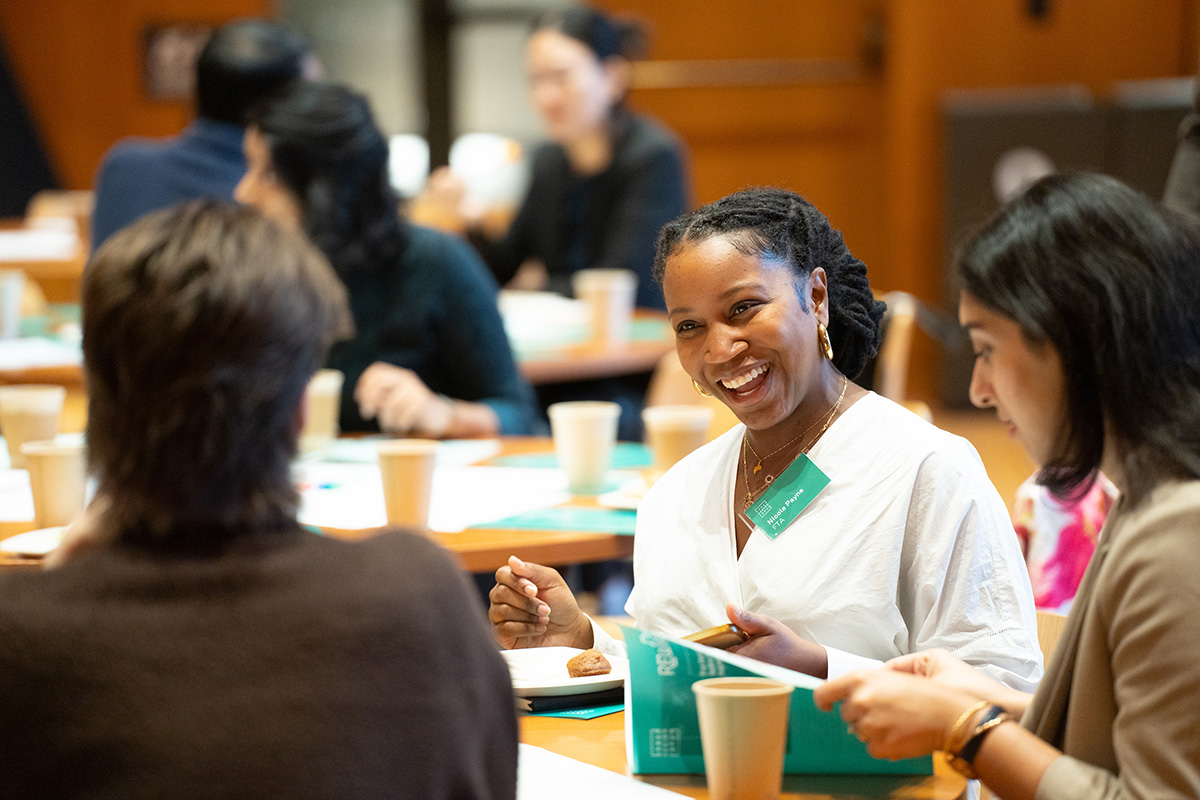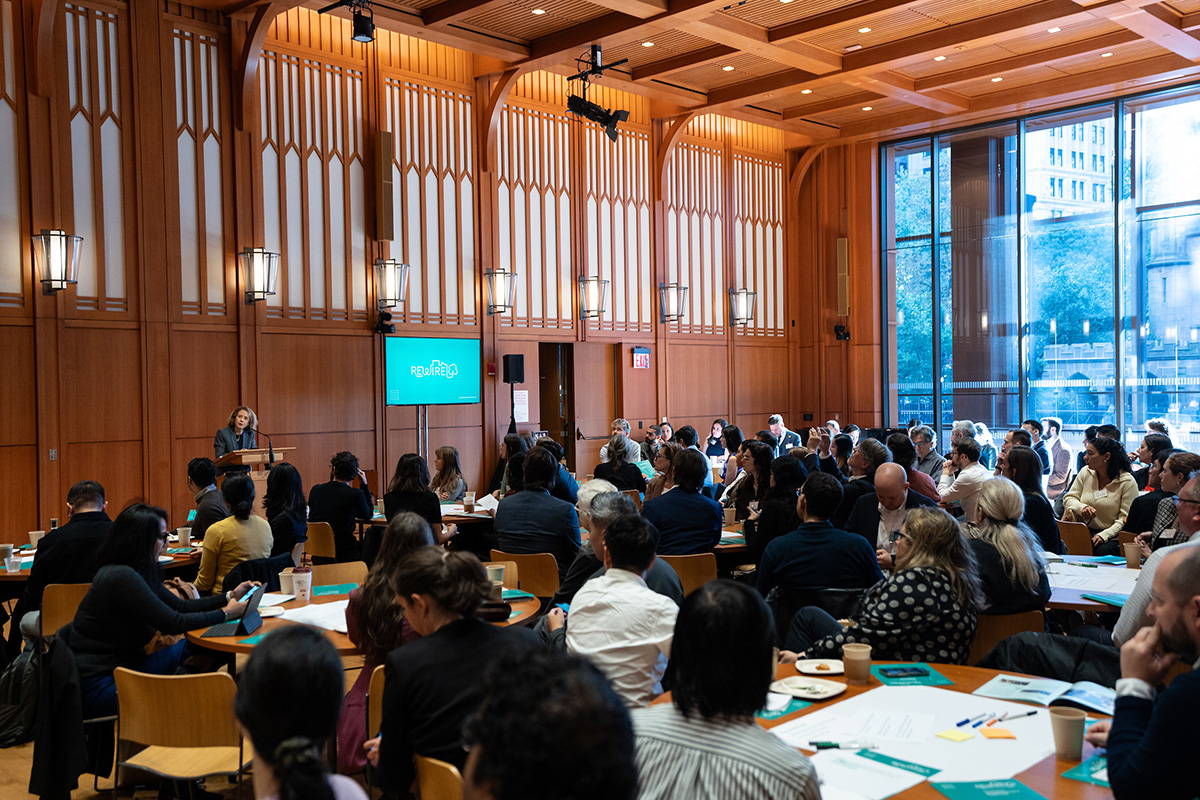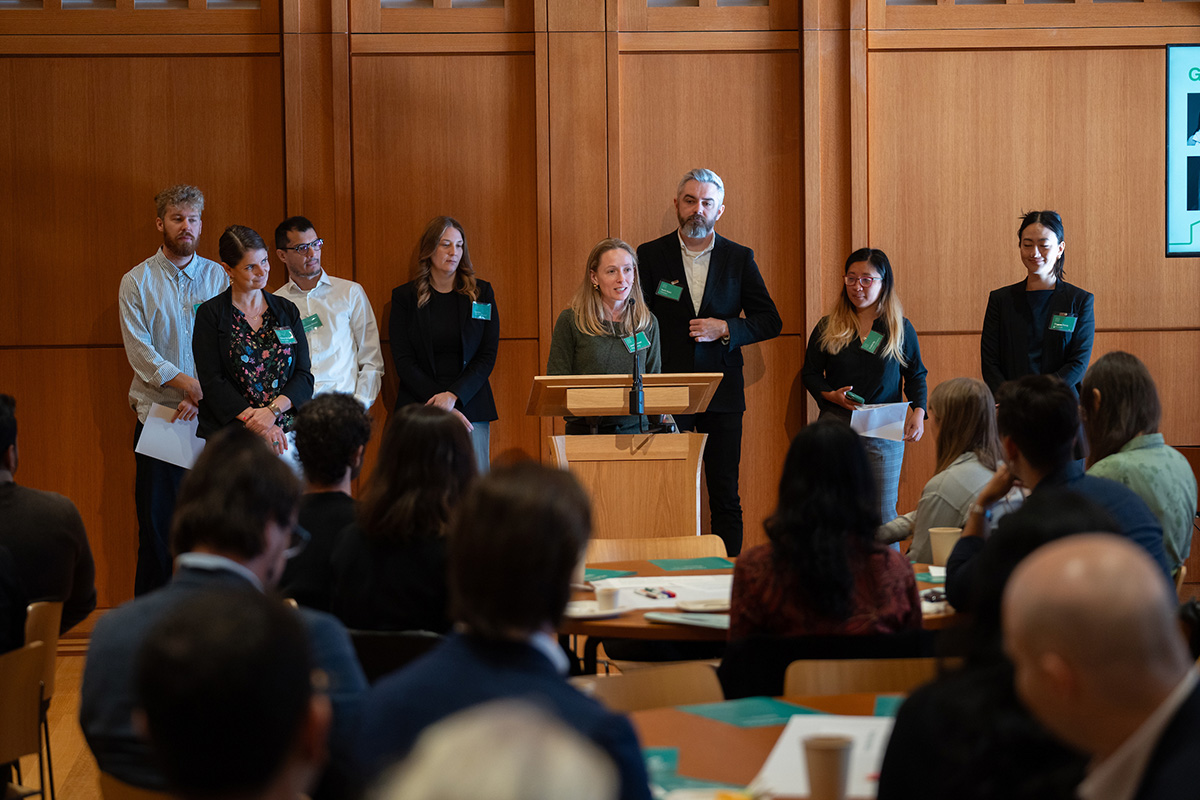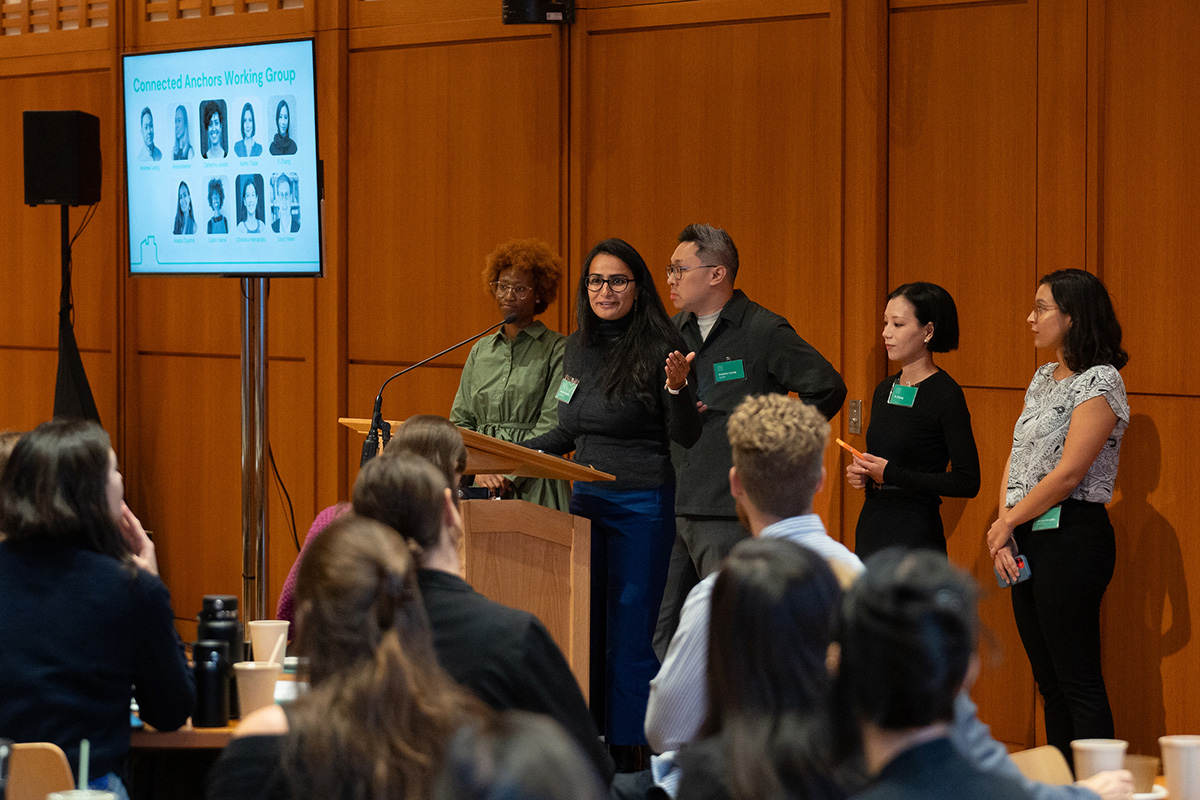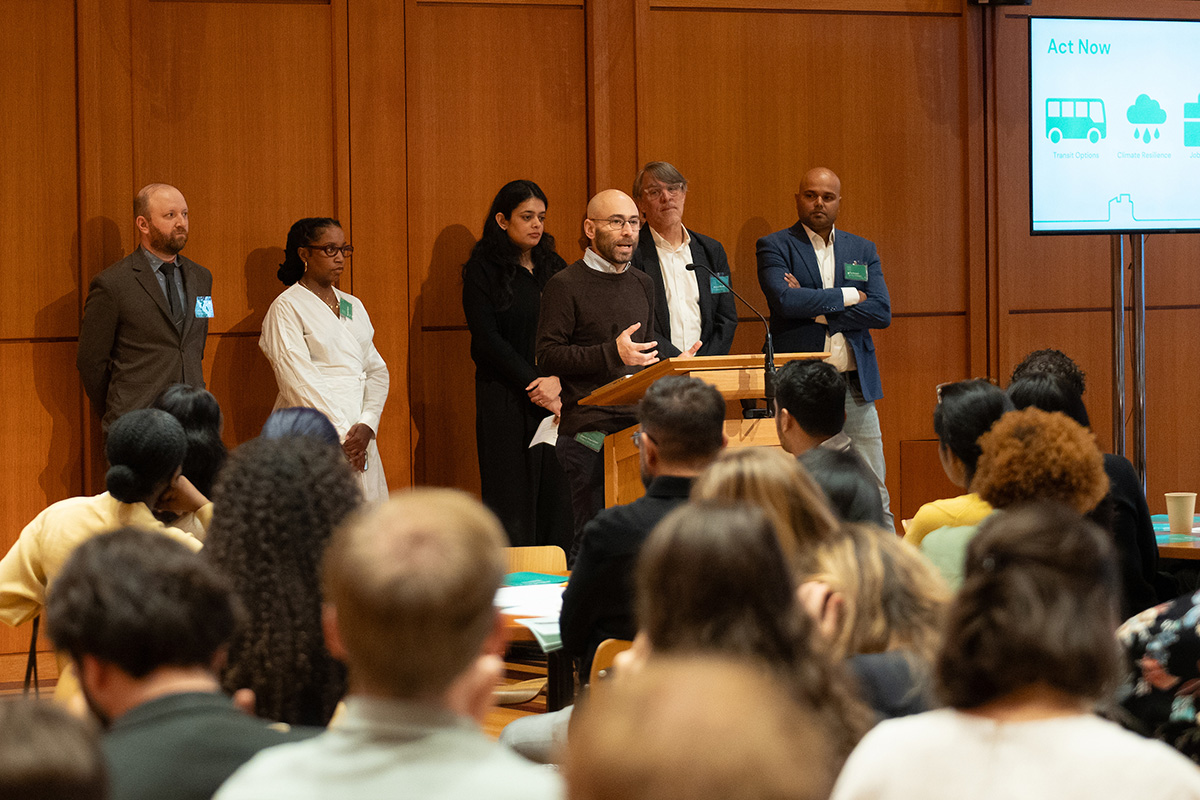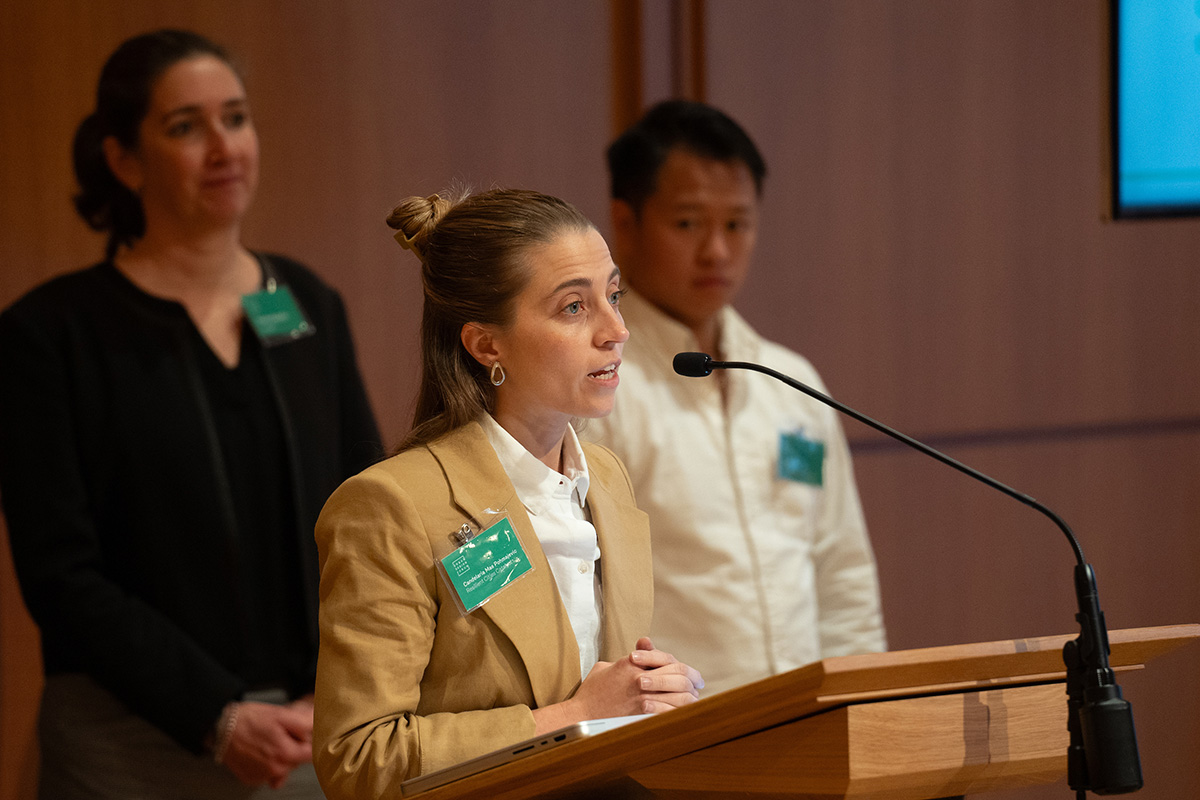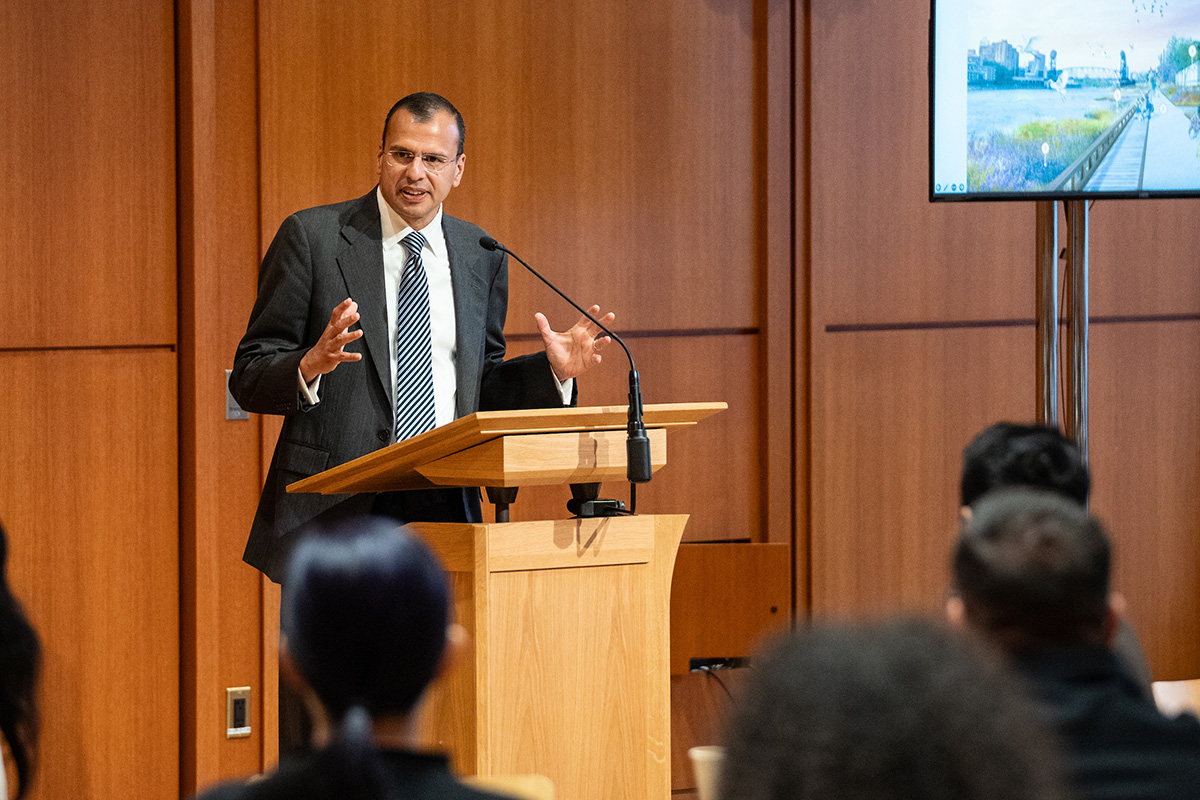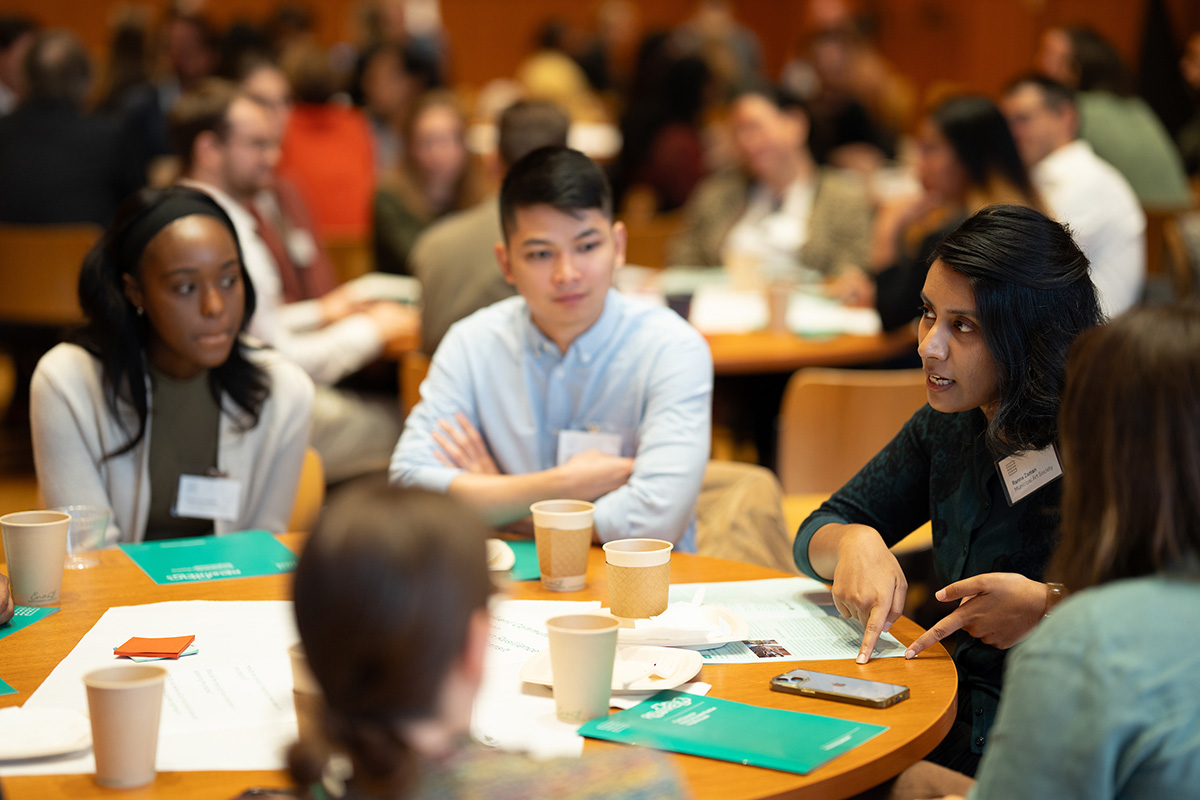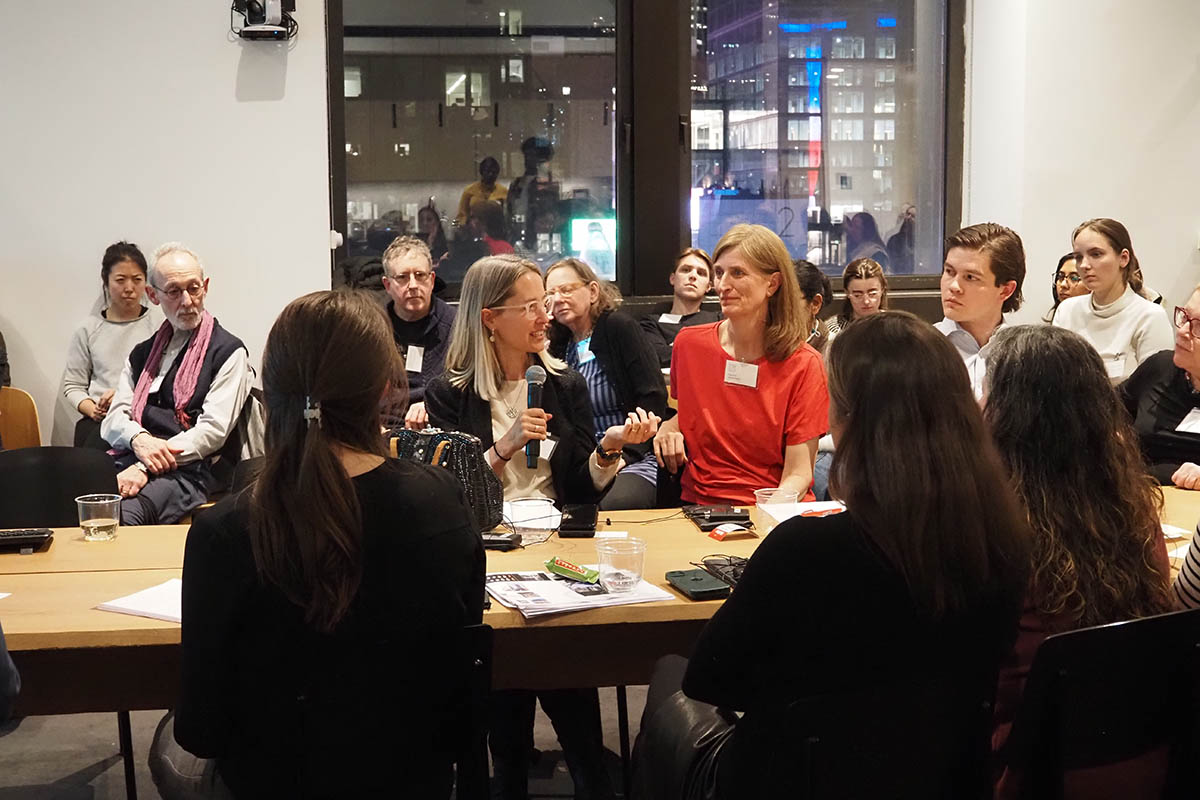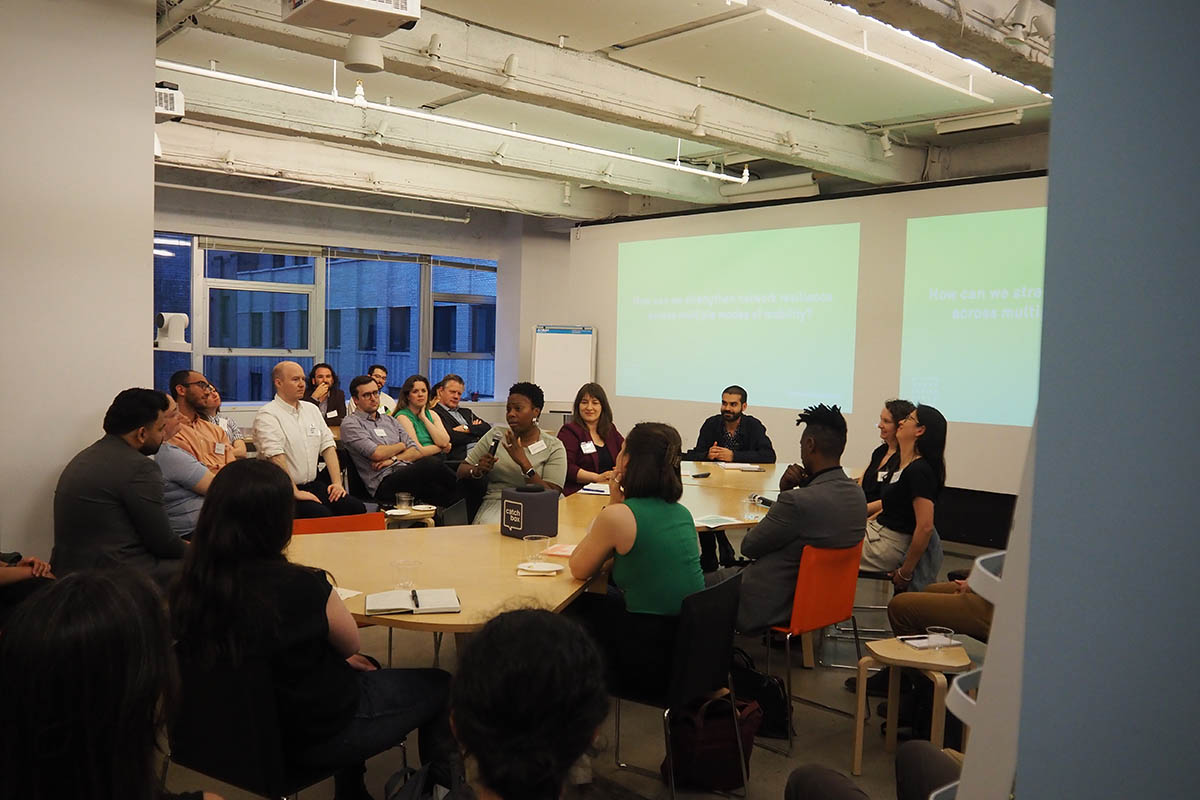
Let’s empower New Yorkers to transform their neighborhoods into engines for a climate positive city.
The climate crisis is here and we can’t look away.
Week after week, New Yorkers read headlines about rising global temperatures. Historic wildfires, thawing permafrost, rising seas, and ecosystems on the brink of collapse stoke fears of an uncertain future. Here at home, New York City residents face increased risks of extreme heat-related illness, deadly air quality from traffic-choked highways, and unpredictable rainstorms that damage coastal and inland properties, as well as our transit system.
So, what does it mean to enact climate action and redesign an already-built city to meet the climate crisis?
We’re in a unique moment of transition and opportunity. City and state leaders have set ambitious goals that include reducing greenhouse gas emissions 80% by 2050 and creating 30% tree canopy coverage citywide. And although national leadership may be uncertain in the coming years, recent historic federal funding has trickled into the city. Paired with significant investments from the state’s Climate Leadership and Community Protection Act and Environmental Bond Act, the City’s aggressive buildings climate law, Local Law 97, and neighborhood-based planning efforts like Climate Strong Communities, there is a feeling of optimism.
But we face an uphill battle.
To reach those goals, New York City must reduce its energy use in existing residential buildings that fall out of Local Law 97 regulation by 50%, which translates to electrifying approximately 30,000 buildings under 25,000 square feet annually until 2050. That’s a pretty big mountain to climb. As we focus on rewiring our existing buildings, the city must also transition from a carbon-intensive construction sector that generates an overwhelming 7,500 tons of demolition waste daily.
While we decarbonize our city, we know we must also adapt to changing weather. In the public realm, 70% of the city’s surfaces are impervious and lack the essential green infrastructure needed to reduce environmental health impacts, address biodiversity challenges, and withstand extreme weather. Rainstorms, flooding, and heatwaves regularly expose our vulnerabilities, particularly in the city’s transit infrastructure, and lead to dangerous commutes and system-wide disruptions.
New York City is currently ill-equipped with the skills, human capital, and labor needed to build a climate positive future. There’s a critical gap in supporting climate education and workforce development from childhood to adulthood, as evidenced by the fact that only 52% of public school educators in the city currently teach climate change.(1)
Without fearless funding and coordinated action, environmental justice neighborhoods and the most vulnerable New Yorkers are unprepared for worsening weather. According to the City’s recent EJNYC report, Black and Latine residents, low-income communities, youth, older adults, and residents with pre-existing medical conditions are especially at risk.(2) How are we ensuring that new funding is directed to the neighborhoods that need it the most? How can we ensure that New Yorkers in Hunts Point and Brownsville are as climate-ready as those in Battery Park City and Wall Street? Moreover, do we have the institutions and planning processes needed to take on this existential challenge of protecting every New Yorker and our city’s economy?
How can we ensure that New Yorkers in Hunts Point and Brownsville are as climate-ready as those in Battery Park City and Wall Street?
Over the past year, our community came together to explore these exact questions. Through public programs and working groups, Rewire has examined ways to transform our buildings, public spaces, and infrastructure into engines for climate action. This past year, we hosted monthly packed roundtables on climate organizing, circular design, retrofitting affordable housing, coastal and transportation resilience, biodiversity, and renewable energy infrastructure. While we have ambitious citywide goals that coordinate agencies and major emissions contributors to address climate change, most neighborhoods lack the resources needed to drive their visions forward.
Our goal was not to address every challenge explored in our programming, but to create a space for further imagination about the next chapter of our city’s climate response. To achieve this, we enlisted 48 Urban Design Forum Fellows to advance new design and policy proposals across five key issue areas. We aimed to energize and mobilize leaders from both the private and public sectors, creating new venues for discussion – not just about what is being implemented now, but about what could be in the future.
This interdisciplinary cohort of civic leaders lent their expertise — in architecture, urban design, landscape architecture, planning, engineering, community organizing, behavioral science, transportation and environmental policy, economic development, housing, and sustainability — to shape five transformational proposals for New York City. Our creative blueprint for climate positive neighborhoods includes strategies empowering neighborhood organizations to help scale energy retrofits; supporting industrial businesses to create circular economies; transforming decommissioned peaker plants into community biodiversity hubs; retooling libraries to support neighborhood-based climate education; and designing a bus rapid transit network to advance transportation resilience.
Across our working groups, we aimed to address disconnects between historical top-down planning and ground-up neighborhood-level climate goals. In addition to deep and long-term commitments to fund sustainability and adaptation projects, we know we must also empower every neighborhood to apply local knowledge to their specific climate challenges.
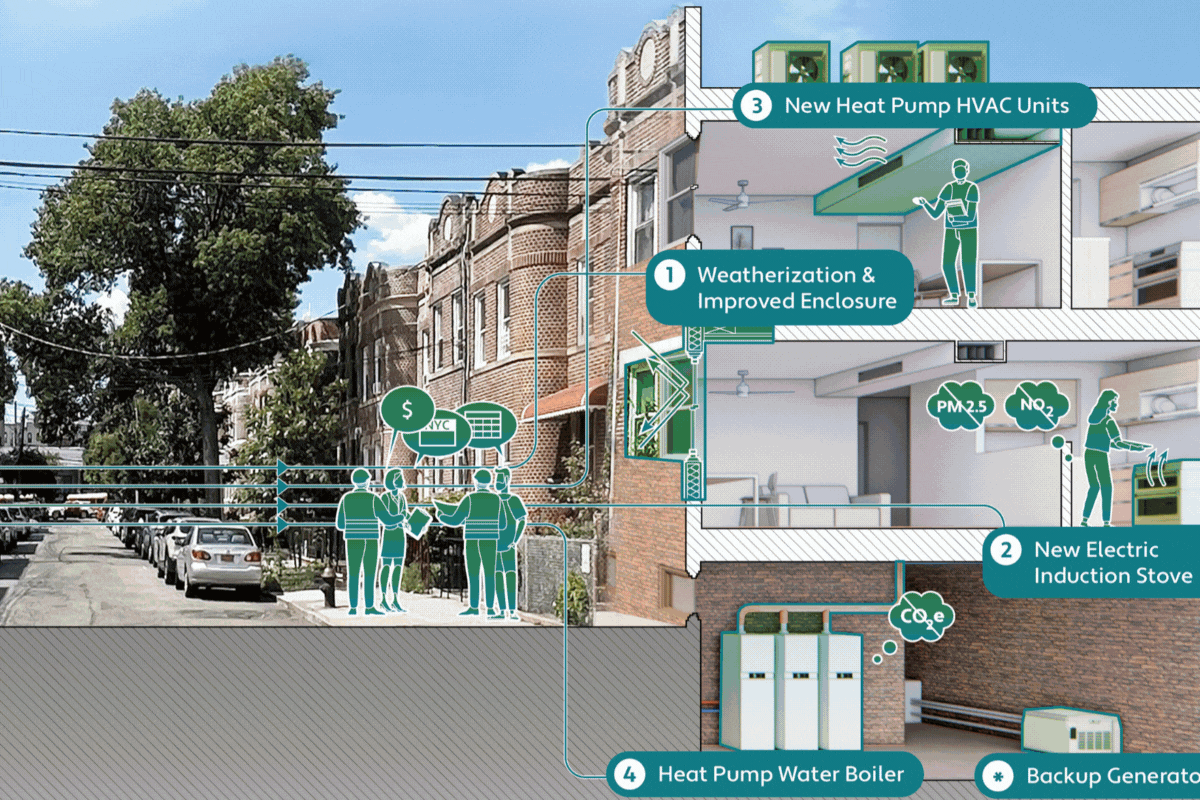
Rather than a binary of a top-down approach or resident-led individual action, a climate positive city should function as a network of networks of local climate champions and community-based organizations. The goal of government should be to empower these organizations as conduits to neighborhood residents and businesses and help coordinate an accelerated grassroots transition that is guided by an overarching citywide plan.
This publication is a blueprint for organizing city government, community visionaries, and the design and development community to take collective action in reshaping and adapting our built environment. We need new and ambitious ideas and effective processes that are community-centered, in coordination with our citywide climate goals, that give agency to residents who hold unique local knowledge. This work can’t be done in silos or by individuals alone. Only through deeper partnerships and collaborations can we adapt every sidewalk, street, and coastline, and rewire every building, block, and infrastructure to meet the challenge of our lifetimes.
Guillermo Gomez
Director of Programs at Urban Design Forum
1 United Federation of Teachers (UFT) and National Wildlife Federation (NWF), CRETF ClimEd Survey 2021, deployed by the Climate and Resilience Education Task Force in NYC (CRETF), June 11, 2021, accessed August 1, 2024, https://drive.google.com/file/d/1__Vwk0SGK1XZigV3KfA2eQ5RR1xHrNAC/view.
2 Mayor’s Office of Climate and Environmental Justice. EJNYC: A Study of Environmental Justice in New York City. City of New York, 2024. https://climate.cityofnewyork.us/wp-content/uploads/2024/04/EJNYC_Report_FIN_20240424.pdf.
